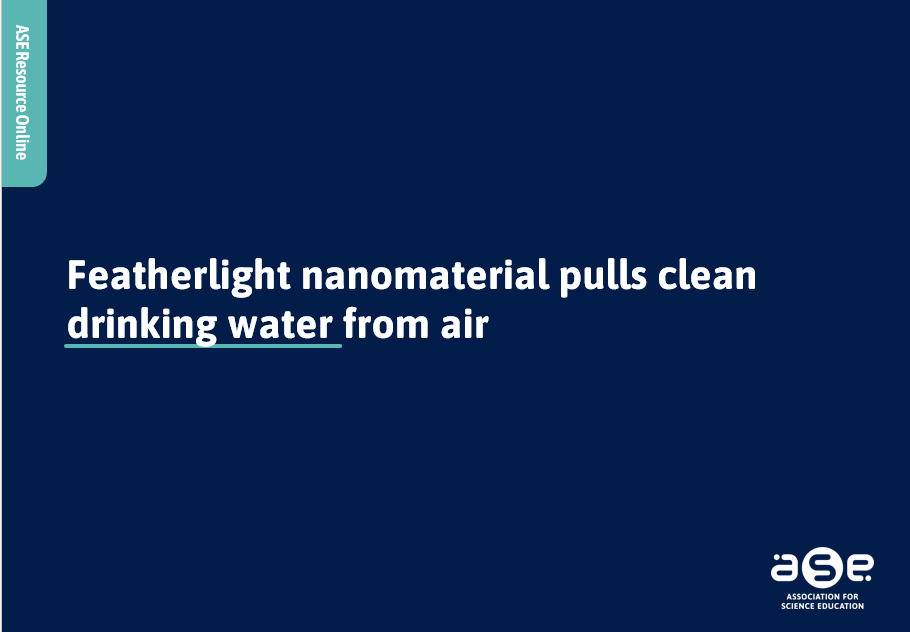
Enhance your students’ understanding and appreciation of a new cutting edge material. Downloadable slides for your use.
Harnessing clean water from the air is a long-standing scientific challenge—especially in regions where drought and water insecurity threaten millions. A new piece of research, published by Interesting Engineering and developed by researchers at UNSW and the National University of Singapore, may have cracked the code. Their cutting-edge material, a graphene–calcium aerogel, can absorb water vapour from the atmosphere and release it with just a little heat - no electricity or moving parts required!
Enhance your students’ understanding and appreciation of this remarkable application of chemistry and materials science by teaching them about this modern breakthrough in your lessons on nanomaterials, bonding, reversible changes, and sustainability.
Not only does this innovation show how science continues to evolve to meet global challenges, but it also links beautifully to curriculum ideas such as hydrogen bonding, ion–dipole forces, reversible physical processes, equilibrium shifts, material properties, nanostructures, and the chemistry of sustainable development. This case study offers an exciting opportunity for building synoptic links across the curriculum, helping students see how scientific theory has real-world impact and how chemistry truly can change lives.
Download the PowerPoint slides which include:
- Slides 2 and 3 – resources for display on the board
- Slide 4 – handout for printing
Specification links:
- GCSE Chemistry Links:
- A level Chemistry Links:
Online article: Interesting engineering
